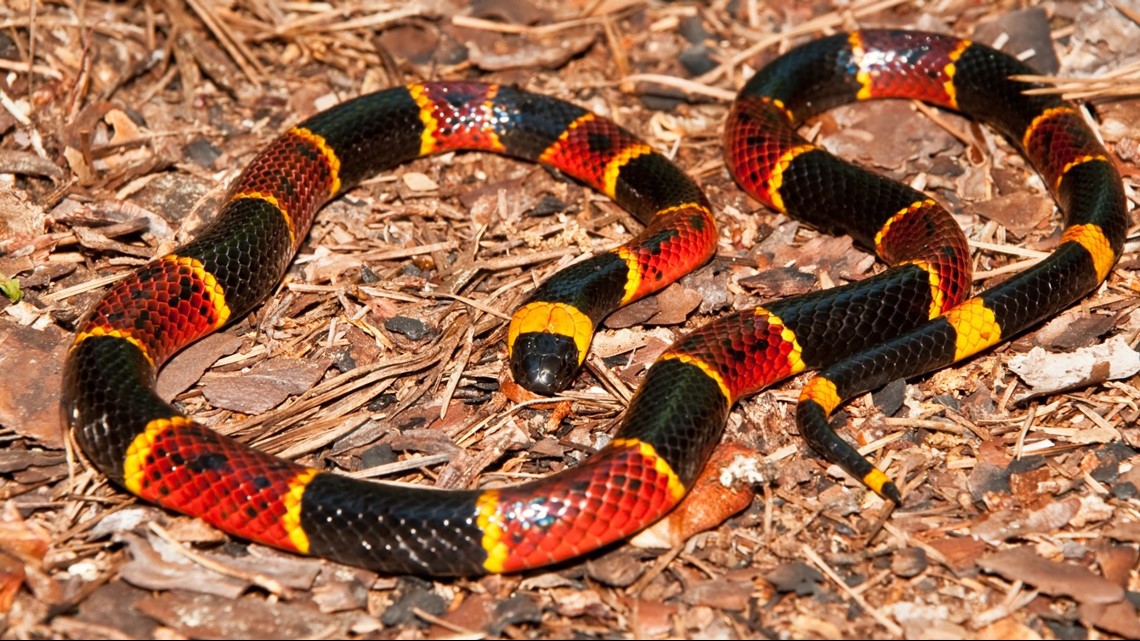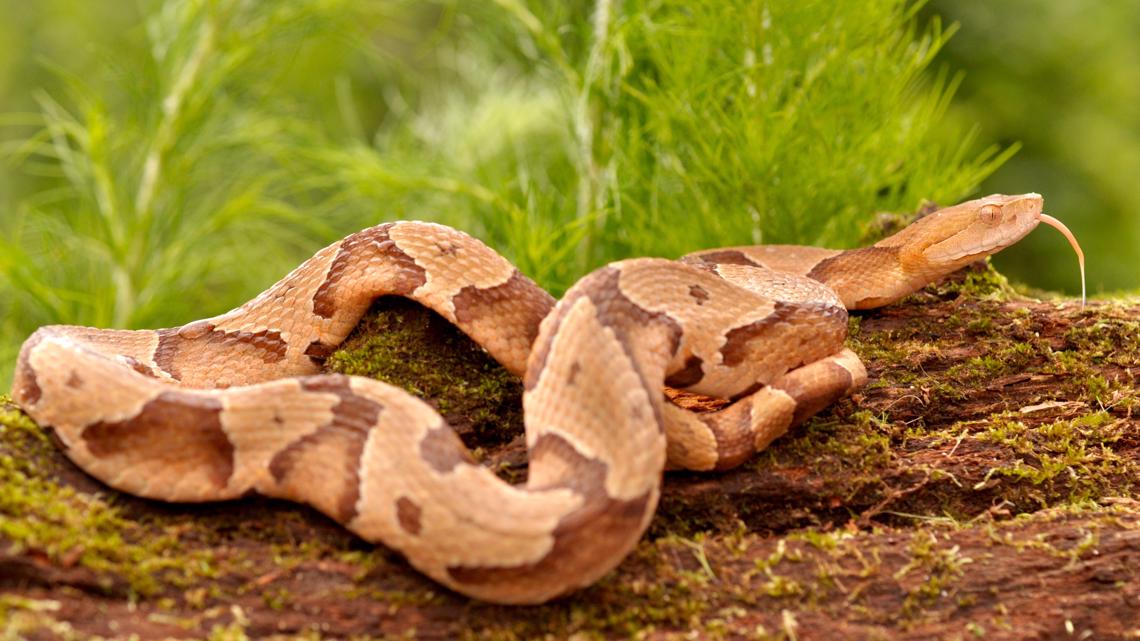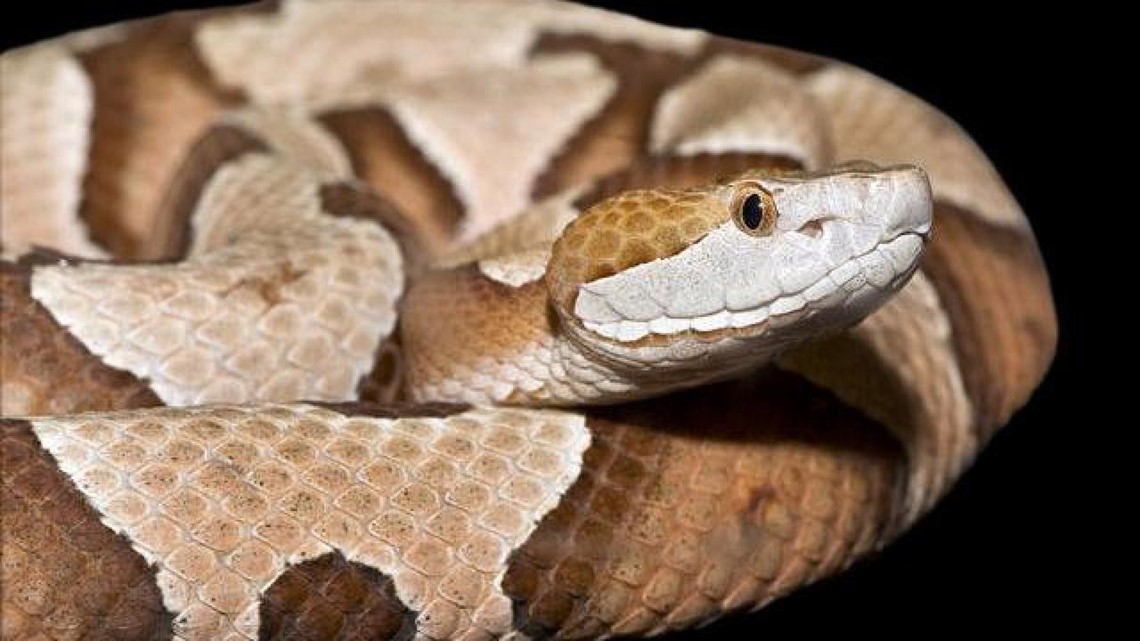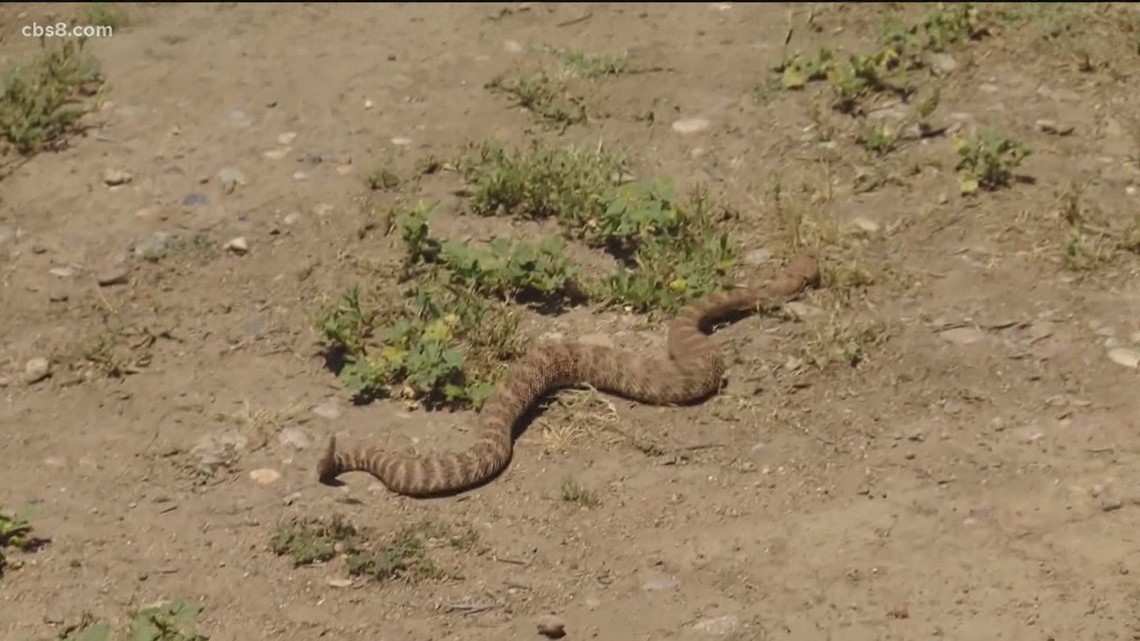TYLER, Texas — Snakes! Are they sneaky, slimy, scary? Or are they skillful and simply sensational? People either love 'em or hate 'em, but either way, snakes play an important role in our world.
Venomous Snakes in Texas
There are four kinds of venomous snakes in Texas: coral snakes, copperheads, cottonmouths (water moccasins) and rattlesnakes.
- Coral Snakes
Only one species of coral snake is native to Texas. The coral snake is shy and rarely seen. It has, in order, red, yellow and black colors. The coral snake has a small mouth, and is usually not aggressive. Its bites are dangerous, but very rare.


Other, harmless snakes have similar colors in a different order. The rhyme "red and yellow kill a fellow" can help you remember that the coral snake's red and yellow colors touch, but the harmless milk snake has red touching black.
- Pit Vipers
A pit viper is a type of venomous snake. Copperheads, cottonmouths and rattlesnakes are called pit-vipers because they have a pit near each nostril which is highly sensitive to heat. This pit helps the snake in locating warm-blooded prey.
- Copperheads
Copperhead snakes have bands of gray and/or brown with a copper-colored heard. They blend in with leaf-covered forest floors and it's possible to stare right at a copperhead without seeing it! Copperheads bite rather than strike. Because they are so well camouflaged, most bites occur when a snake is accidentally picked up or sat or laid on. Always use care when picking up or flipping over logs, boards, old tin or other items where copperheads may be resting.


- Cottonmouths
The cottonmouth, or water moccasin, rarely strays far from water. It can be found in marshes, swamps, ponds, lakes, ditches, and canals in East and Central Texas and along the Gulf coast. It is a stubby, muscular snake and can grow to nearly six feet. When threatened, it will open its mouth to show its fangs. The inside of its mouth is white and reminded people of cotton, hence the name cottonmouth. They eat frogs, fish an small animals. These snakes can be very defensive and sometimes aggressive. They can bite underwater. Swimmers, bathers and anglers on river banks should always keep an eye open for these snakes.


- Rattlesnakes
Nine kinds of rattlesnakes are found in Texas, including the massasauga. Rattlesnakes usually "rattle" before striking, but if they are totally surprised, they may strike before rattling. Most of the rattlesnakes are active at night, when they hunt for prey such as mice, rats and rabbits.


Watch where you step, put your hands or sit down.
Venomous snakes live on or near the ground. They lay on rocks, wood piles, and other spots for a place to sun and a place to hide.
Snakes avoid your huge body, but will definitely bite if stepped on or feel trapped. Most bites happen around the ankle and about 99% of all bites occur below the knee, except when someone accidentally picks up or falls on the snake.
The fangs of venomous snakes are long and sharp, but they break easily. These fangs usually don't penetrate canvas tennis shoes and almost never penetrate leather shoes or boots. Watch carefully where you step, and wear boots in tall grass to prevent most snake bites. If you or a friend get bitten, you need to get to a hospital immediately.
Snakes are not something to be feared, but rather a creature to be respected as a fascinating and helpful member of the outdoors.

